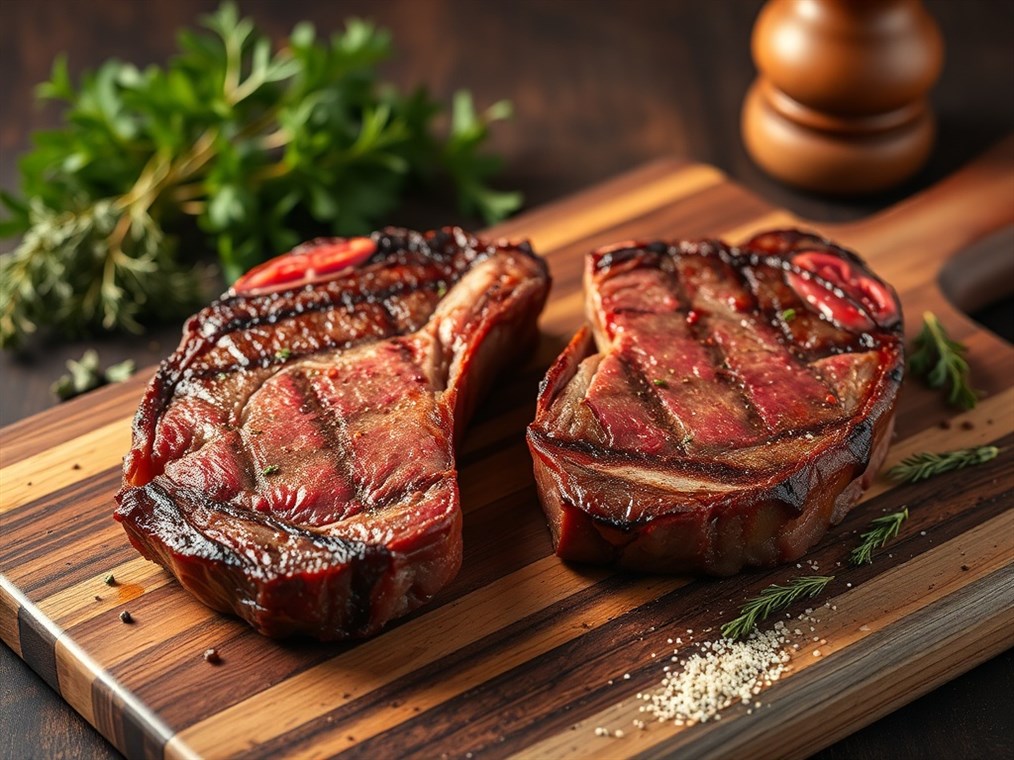New York Steak vs. New York Strip: Let’s Clear Up the Confusion, Shall We?
Okay, steak lovers, let’s talk New York Strip. Or is it New York steak? Honestly, the whole thing can get a little confusing. You’re staring at the menu, trying to decide which glorious cut of beef to treat yourself to, and suddenly you’re bombarded with names. So, is there a difference? Short answer: not really, but there’s a bit more to the story than that. Think of it like this: they’re practically twins, separated by a few regional quirks. Let’s get into the juicy details and figure out what makes this steak so darn special.
What Is a New York Strip Steak, Anyway?
Alright, picture this: the cow’s got a short loin. Sounds a bit odd, right? But this is where the magic happens. It’s basically the section running along the spine, behind the ribs, and just before you get to the sirloin. Because those muscles are pretty laid-back and don’t do a whole lot of work, the meat is beautifully tender. And that, my friends, is where the New York Strip comes from.
What I love about this cut is its texture. It’s got a nice, tight grain and a satisfying chew. Sure, it’s not as marbled as a ribeye – those things are practically swimming in flavor-fat – but the New York Strip has just enough to keep things interesting. You get this rich, beefy flavor that’s just… well, it’s perfect. That balance is why it’s a total rockstar in the steak world.
So Many Names! (And Why It Matters)
Now, here’s where things get a little silly. The New York Strip has more aliases than a spy in a Bond movie. Depending on where you are, you might hear it called something totally different. I remember being in Kansas City and asking for a New York Strip, and the waiter looked at me like I had two heads! Here are some of the most common names you might encounter:
- New York Steak: Yep, same thing. Simple as that.
- Kansas City Strip: Ah, Kansas City. They love their version of the Strip. Some folks will tell you the real Kansas City Strip has the bone in, while the New York version is boneless. Honestly? It’s not a hard and fast rule.
- Strip Loin Steak: This one’s pretty straightforward. It just tells you where the cut comes from.
- Ambassador Steak: Okay, I’ll be honest, I don’t hear this one too often, but it’s out there!
- Club Steak: Sometimes, this means a bone-in New York Strip. Just to keep you on your toes.
- Delmonico Steak: Back in the day, Delmonico’s Restaurant in New York City made this cut famous. So, you might still hear it called that, especially in older steakhouses.
Why All the Fuss? What Makes It Special?
So, why is the New York Strip such a big deal? What’s all the hype about? Well, a few things make it stand out from the crowd:
- It’s tender: Those lazy muscles I mentioned earlier? They pay off big time.
- The flavor is spot-on: Not too overpowering, not too bland. Just a good, solid beefy taste.
- That texture, though!: It’s got a bit of chew to it, which I personally love. It feels like you’re actually eating something.
- It’s a kitchen chameleon: Grill it, pan-sear it, broil it… it doesn’t care! It’s delicious no matter how you cook it.
- Steakhouse royalty: Walk into any decent steakhouse, and you’re pretty much guaranteed to find a New York Strip on the menu. That says something, right?
Marbling: The Secret Weapon
Let’s talk marbling. Those little flecks of fat running through the meat? That’s where the magic happens. As the steak cooks, that fat melts and basically bathes the muscle fibers in flavor. It’s like an internal self-basting system!
Now, the New York Strip doesn’t usually have as much marbling as a ribeye, but you still want to look for a good amount. The more marbling, the more flavor and tenderness you’re going to get. So, choose wisely!
Bone-In or Boneless? That Is the Question.
Most of the time, you’ll find the New York Strip sold as a boneless steak. But, like I said, you can sometimes find bone-in versions, especially if you’re looking for a Kansas City Strip or a club steak. Some people swear that the bone adds extra flavor and helps keep the steak juicy. Personally, I think it’s a matter of preference.
A Little History Lesson
The New York Strip’s claim to fame is often linked to Delmonico’s Restaurant in New York City. Back in the 1800s, they started serving this strip loin steak, and it was an instant hit. Even though some folks argue about the origins, the New York connection stuck, and the name became legendary.
Pro Tips for Cooking the Perfect Strip
Want to cook a New York Strip like a pro? Here are a few things I’ve learned over the years:
- Don’t be shy with the seasoning: Salt and pepper are your friends!
- Get that pan screaming hot: You want a good sear on the outside.
- Don’t ruin it by overcooking!: Medium-rare to medium is the sweet spot. Use a meat thermometer – trust me on this one.
- Patience is a virtue: Let the steak rest for a good 5-10 minutes before slicing. This lets the juices redistribute, so you don’t lose them all when you cut into it.
The Bottom Line
So, there you have it. Whether you call it a New York steak, a New York Strip, or even a Kansas City Strip, you’re talking about the same fantastic cut of beef. And with its awesome mix of tenderness, flavor, and the fact that you can cook it a million different ways, it’s no wonder the New York Strip is a total champion in the steak world. Now go forth and grill!

